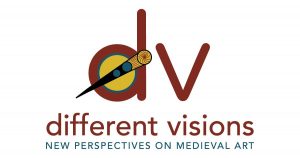 Appel à articles : « Towards a Visual History of the Working Class »
Appel à articles : « Towards a Visual History of the Working Class »
Different Vision. A Journal of New Perspectives on Medieval Art
Abstracts due March 30, 2021
Edited by Diane Wolfthal
The discipline of art history is closely tied to the art market and to wealthy donors and collectors, and for this reason has long identified with the upper class. Many art historians betray a tendency to identify with the elite. For example, Ruth Mellinkoff, in her fine book Outcasts, expresses a typical attitude when she asserts, “While we who live in the era of the common man publicly extol his virtues, privately we admire and covet the attributes of the upper class.” There are innumerable publications on medieval queens, wealthy art donors, and the luxury objects that they commissioned, but few studies concern the laboring class. In part this is because medieval sources are less interested in workers than in the elite. It is more difficult to write an art history from below because there are fewer textual and visual sources, but it can be done, as earlier scholars have shown. Outstanding examples include J. J. G Alexander’s study of peasants, Deidre Jackson’s essay on labor, and Ruth Mellinkoff’s book, among others.
This future issue of Different Visions will be devoted to exploring those who labored. We welcome proposals for articles that explore any aspect that builds towards a visual history of the working class in the Middle Ages (400-1530). Essays may examine images of the laboring class or the objects that were part of their lives, or any other relevant topic. Michael Uebel and Kellie Robertson have shown that in every European language the medieval word for “labour” had an “unambivalent connotation of pain, suffering, and fatigue.” Do visual images confirm this? How is labor depicted? What role does the intersection of gender, race, and class play in medieval images of laborers? How does medieval art show animals or other nonhumans who labor? Have medieval images been used to support modern ways of seeing labor and capital, production and consumption? Does the Aristotelian contempt for labor affect medieval images? Which objects were associated with working class? Which material and immaterial qualities were associated with workers?
Please submit an abstract of about 150 words by March 30 to Diane Wolfthal at dianewolfthal@yahoo.com. Those whose abstracts are selected for publication will be asked to submit their article by July 30. Contributors will then share their research through a zoom conference to be held Aug. 15. Final, revised drafts will be submitted Dec. 31.
Source : https://medievalartresearch.com/

Leave a Reply
You must be logged in to post a comment.